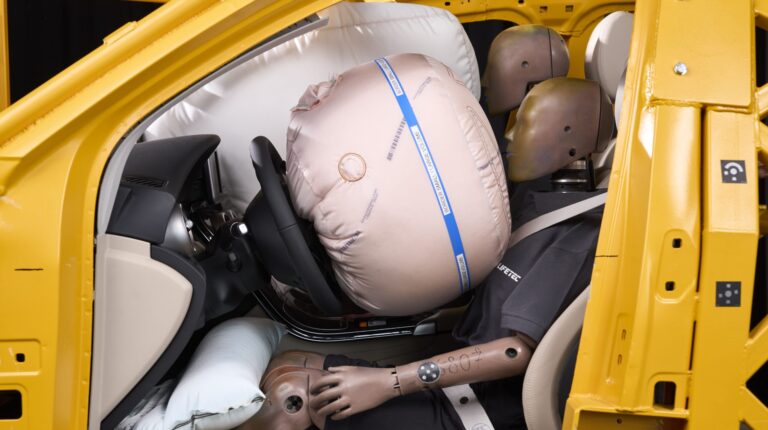ZF Liftec has announced the development of a dual contour airbag designed to enhance safety in advanced automated driving scenarios. The airbag is designed to adjust its inflation based on the occupant’s seating position and body characteristics, to provide improved protection even in the more relaxed seating positions enabled by automated driving systems.
With the advent of automated driving, drivers will have the flexibility to change their seating positions. To ensure optimal protection in the event of a crash, ZF Liftec’s passenger-side airbag can inflate in two different sizes depending on the seating position. A similar dual contour airbag is also being developed for the driver’s side for future partially or fully automated vehicles.
As Level 3 automated driving receives approval in more countries, drivers can turn away from the traffic while the system is activated, provided they can resume control when necessary. Level 4 fully automated driving could eliminate this restriction for certain routes, enabling drivers to adjust their seat positions for greater comfort. However, current safety measures only guarantee protection for standard upright seating positions.
Crash tests have indicated that in a frontal crash, the traditional seat belt and airbag combination may not offer optimal protection if the occupants are in a comfort seat position with a backrest angle of around 40°. The increased distance between the occupant and the airbag in this position reduces its effectiveness.
“Our aim is to ensure that occupants in comfort seating positions also enjoy at least the same safety standards they are accustomed to in non-automated driving,” said Harald Lutz, head of development at ZF Lifetec.
The development of a dual contour passenger airbag has informed the creation of a similar driver airbag, which features two stages of inflation. These stages are controlled by a system of bag-cushion-tethers and an active release unit, which adjusts the airbag’s size based on the occupant’s seating position.
“This is the absolute benchmark in this field,” said Lutz.
To accommodate the dual contour airbag’s requirements, the company has developed a two-stage gas generator capable of filling the airbag’s varying volumes within milliseconds. This technology allows for a depth adaptivity of approximately 200mm on the driver’s side, with the passenger side achieving a maximum inflation volume of up to 190 liters.
The airbag control system integrates with the vehicle’s electronics to determine the occupant’s seating position and adjust the gas generator accordingly. Additional sensors, such as interior cameras, can provide more precise assessments.
The system can also vary the inflation pressure based on the occupant’s size, weight and stature, and optimize restraint by modulating air vents as needed.
“With this adaptive system, which ZF Lifetec already offers in other airbags in series applications, the restraint function of the airbag in many vehicles is already more efficient today and at the same time takes into account the ‘real-life safety’ approach,” said Lutz.



